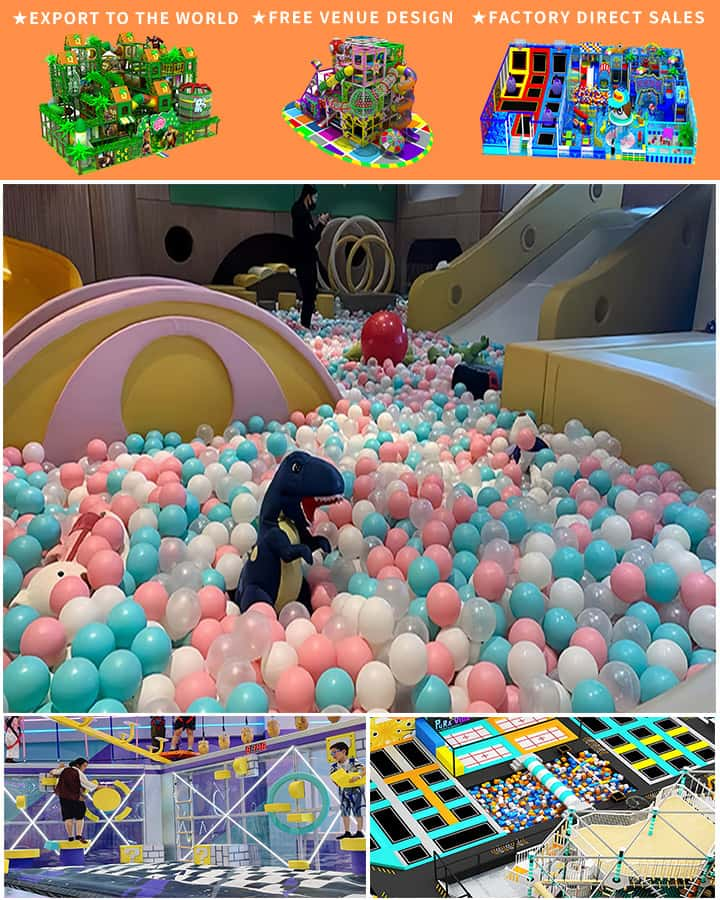In today’s bustling world where screen time often overshadows physical play, starting an indoor playground business presents a fantastic opportunity. This venture not only offers families a safe and entertaining environment for children but also promises a thriving business model with substantial growth potential. Whether you are a seasoned entrepreneur or new to the industry, here are essential steps to guide you through the process of launching your own indoor playground.
1. Market Research and Feasibility Study
The first step in starting any business is thorough market research. Understand the demand for indoor playgrounds in your targeted area by analyzing demographic trends, local competition, and consumer preferences. Conduct surveys, focus groups, and interviews with potential customers to gather insights about their needs and expectations. Additionally, assess the feasibility by evaluating factors such as initial investment, operational costs, and potential revenue streams.
2. Develop a Detailed Business Plan
A well-structured business plan serves as a roadmap for your new venture. It should include your business goals, target audience, competitive analysis, marketing strategies, operational plan, and financial projections. Clearly outline the unique selling proposition (USP) of your indoor playground—be it themed attractions, educational activities, or membership programs. Ensure that your business plan is comprehensive and realistic, addressing potential challenges and outlining contingency plans.

3. Choose the Right Location
Selecting the perfect location is crucial for attracting customers. Look for a place with high foot traffic, ample parking space, and easy accessibility. Consider proximity to schools, residential areas, and other family-oriented businesses. The size of the indoor playground should be sufficient to accommodate various attractions without feeling overcrowded. Additionally, ensure that the venue complies with all safety regulations and zoning laws.
4. Design and Layout Planning
The design and layout of your indoor playground can make or break the customer experience. Invest in creating an inviting and stimulating environment that encourages play and exploration. Incorporate diverse attractions such as ball pits, climbing structures, trampolines, slides, and interactive games. Ensure the equipment is age-appropriate and adheres to strict safety standards. Consult with professional designers to optimize space utilization and create a visually appealing ambiance.
5. Obtain Necessary Permits and Licenses
Before opening your doors, secure all required permits and licenses. These may include a business license, health department permits, fire safety permits, and insurance policies. Compliance with local regulations ensures the legality of your operations and protects your business from potential liabilities. Engage with local authorities and regulatory bodies early in the planning process to understand and fulfill all legal requirements.
6. Marketing and Promotion
Effective marketing is key to attracting visitors to your indoor playground. Develop a strong brand identity with a catchy name and logo. Utilize social media platforms, local advertising, and partnerships with schools and community organizations to spread the word. Offer promotions, discounts, and loyalty programs to incentivize repeat visits. Create content that highlights the fun and educational benefits of your playground, showcasing testimonials and success stories from delighted parents and children.
7. Staff Training and Customer Service
Hiring the right staff is crucial for maintaining a positive experience at your indoor playground. Recruit individuals who are passionate about working with children and possess good interpersonal skills. Conduct extensive training on safety protocols, customer service, and emergency procedures. Foster a welcoming and supportive work environment to ensure that your team consistently delivers exceptional service. Remember, happy employees contribute to satisfied customers.
8. Monitor and Adapt
Once your indoor playground opens, continuously monitor its performance and seek feedback from customers. Keep track of key metrics such as attendance rates, revenue, and customer satisfaction. Be open to making adjustments based on feedback and changing market conditions. Regularly update attractions and introduce new features to keep the experience fresh and engaging.
Starting an indoor playground business requires careful planning, dedication, and a commitment to providing a safe and enjoyable environment for children. By following these steps, you can unlock a world of fun for young adventurers while building a successful and rewarding enterprise. So why wait? Dive into the exciting realm of indoor playgrounds and watch your dream business come to life!




